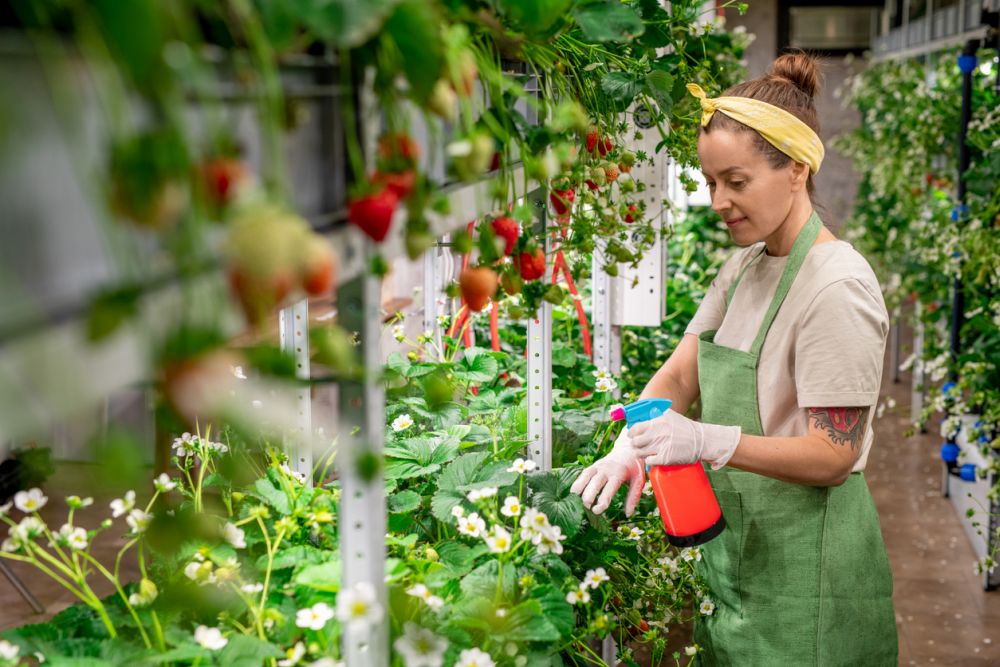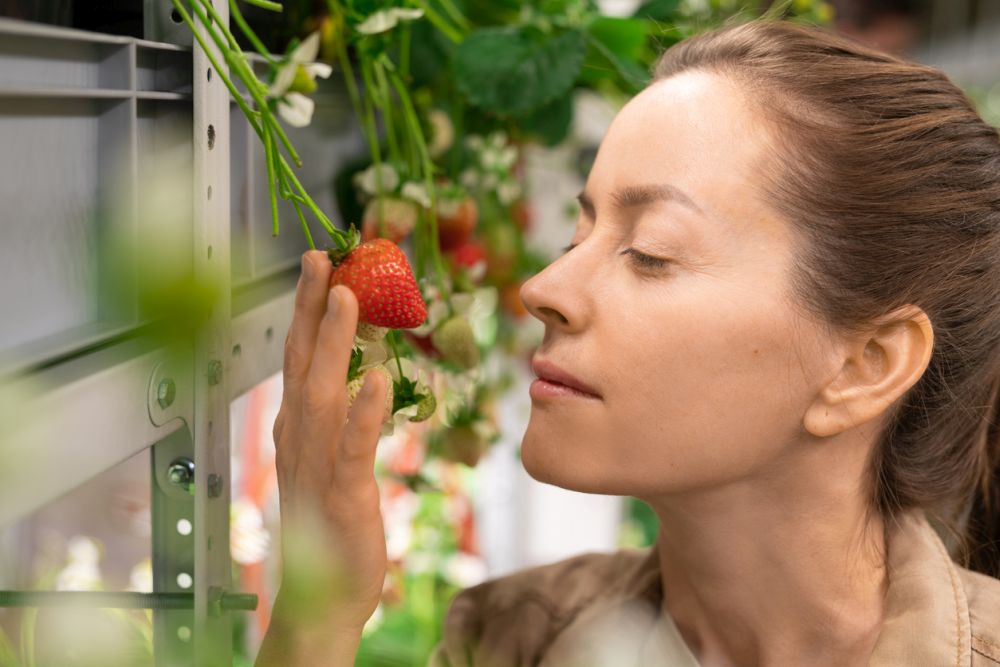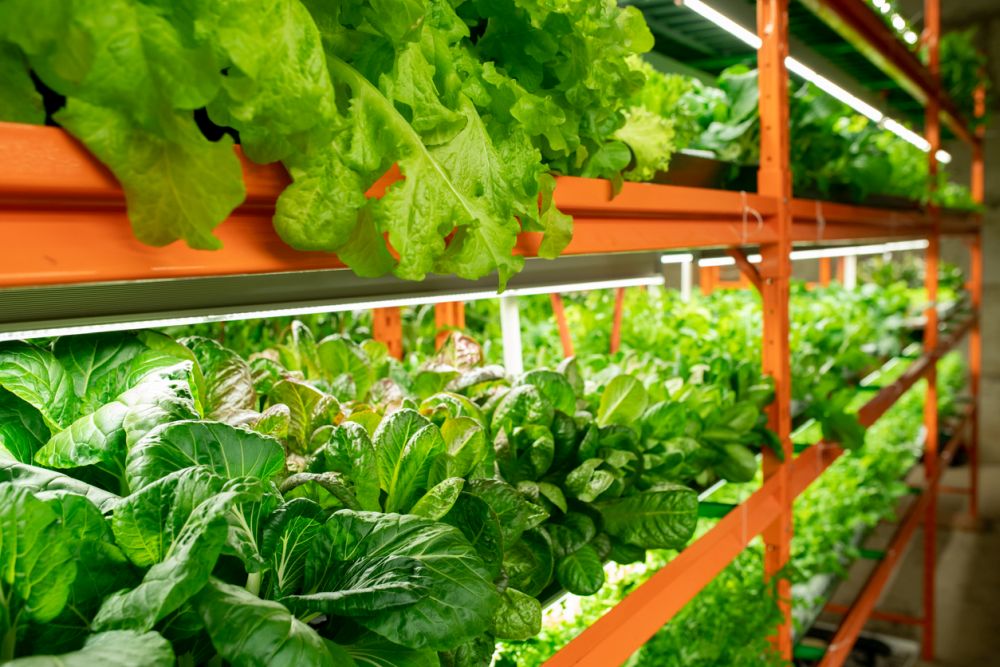Vertical Farming – How To Start Vertical Farms At Home
Vertical farming at home is hailed as the next big trend toward making homes more self-sufficient and feeding the world in the 21st century. Not everyone is blessed with a spacious garden that grows just about everything you need. But don’t let the lack of gardening space put you down because in-home vertical farming is both a viable option and a rewarding experience.
Of course, there’s a lot to consider before you start a vertical farm at home. The costs are one consideration, and what type of care do they need. Read on to find out more about vertical farming, its benefits, financial costs, and the types of plants you can grow.
What Is Vertical Farming?
The concept of vertical farming is not new. As far back as the 6th century BC, the Babylonians were dappling with growing plants vertically instead of horizontally. The Hanging Gardens of Babylon represent the epitome of their gardening skills. What’s new, however, is applying this methodology in in-home gardens.
When you want to grow a patch of tomatoes, you clear up space in your garden, sow the seeds and care for the vines until the tomatoes are ripe and ready to harvest. But what if you want to grow cucumbers, bell peppers, and tomatoes all at the same time? The traditional way of growing horizontally will not allow that. You’ll have to take turns planting one veggie at a time in your limited growing space.
But with vertical gardening, it’s possible to grow more than one plant at the same time without taking up much space in your garden either. The idea is you stack layers on top of each other and start growing on each layer. That way, you’ll get more crops per square foot than if you were growing on just one level.
Of course, you’ll need to change a few things about how you do your gardening. Everything from watering, feeding, light, and even growing medium will have to change to accommodate the new way of growing plants. Luckily, an emerging technology called Controlled Environment Agriculture (CEA) will make it easier for you to adapt to the specific needs and requirements of vertical farming. This technology gives you full control over variables such as light, temperature, and water to increase your yield by up to 75 percent compared to horizontal gardening.
Benefits of Vertical Farming
So is vertical farming worth the trouble and cost, or is it just a fad? Why would you change your gardening ways and invest in some pricey equipment just so you can grow tomatoes alongside cucumbers? As it turns out, there’s more to vertical farms than just having more crops. Here are some of these benefits.
- Saved Space: That’s the most obvious benefit you get out of vertical farming. The stacked layers don’t take much space and reward you with more crops. In this day and age, where not many people have the luxury of a garden attached to their property, everyone can start gardening whether they have a garden or not.
- Less Water Consumption: As you know, getting the right amount of water delivered to the roots of the plants in the garden is not an easy feat. Between the hot weather and the inefficient watering methods, more water gets wasted. But with vertical farming, water is recycled, and every drop of water is used efficiently, which leads to less water waste.
- More Crops: As you can expect, you’ll be able to grow more crops at the same time and increase your food production. No more choosing between crops to accommodate your limited gardening space. And with efficient food and watering techniques, you’ll get more yield out of your plants.
- Controlled Environment: As opposed to the exposed garden hammered by fluctuating temperatures and sunlight and frost, vertical gardening gives you more control over the growing conditions of the plants. This improves the plants’ chances of success and reduces crop loss to diseases, harsh weather conditions, and relentless pests.
Vertical Farming Costs
Naturally, the first thing to ask about is how much it will cost to start your vertical farm at home. Unlike your regular garden, where you can start with a trawl and a few seeds, vertical farming needs more sophisticated equipment. There are also running costs to consider. So let’s take a look at these two types of costs.
- Equipment: The equipment needed to start an in-home vertical farm included the stacked shelves, watering system, temperature control, artificial light system, and growing medium, among others. There are many systems available in the market, and they range from the most basic, which costs around $50, to the more advanced system that could put you back $600. This is a one-time payment, and once you have the necessary equipment, you can start growing that very day and every day in the year from here on out.
- Running Costs: Besides the usual seeds and fertilizer costs, you’ll also have other costs related to water and light systems. The more sophisticated your vertical farm equipment, the higher the running costs get. That increased cost will have to do with the electricity bill first and foremost. But in the long run, you’ll be saving money on your green grocery shopping.
Ideal Vertical Farming Plants
Although vertical farming sounds like a great solution for people with little or no gardening space, they are not ideal for all plants. You can’t just grow any veggie or flowering perennial. And, of course, trees and shrubs are off the menu. Because of the limitations of the space and growing medium, among others, you can only grow certain food plants vertically.
That said, veggies of all types are ideal candidates to grow through vertical farming. Whether the plant is suitable for indoor or outdoor growing is not really a concern as far as vertical gardens at home are concerned. You can grow tomatoes, bell pepper, lettuce, and broccoli, to name but a few examples.
Succulents are another good example of plants you grow vertically. With your advanced equipment, you can practically grow any plant you like. Especially those plants that prefer high humidity levels or more light exposure than the average plants. Other plants you can grow include woody herbs, mints, chives, kale, collard greens, and basil.
Vertical Farms Considerations
We mentioned Controlled Environment Agriculture (CEA) technology and how it has revolutionized vertical farming. This technology is mostly focused on how water and light are utilized to improve the plants’ growth and productivity.
Lightning
When you have tiers of plants growing, their light requirements will differ from, say, plants growing under the sun. The very design of the tiers means that some plants will not be getting enough light while others at the top of the structure will get more light than they need. And that’s where CEA technology comes in.
Each tier will have its own lighting system that controls how much light the plants get. You can control the light for specific tiers according to the plants you grow there. That means you have the ability to reduce the light exposure for the plants in tier 1 and 2 but increase it for tiers 5 and 8 and keep the rest of the tiers at normal levels.
But what if you need natural light to filter in and nourish the plants? You can still switch off the light systems in your vertical farm on days where the sun is bright.
Water
As for the water systems, CEA technology pays extra attention and gives you a whole lot of options to choose from. Since a lot of water goes to waste when you irrigate your garden plants, vertical farming is all about water efficiency. Here are a few watering options.
- Aquaponics: This watering system involves growing fish along with the plants. This creates a symbiotic relationship between the fish and the plants. While the fish fertilize the water to feed the plants, the veggies filter the water and absorb impurities. This system is only suitable for plants that can grow in water.
- Aeroponics: Another costly system that targets the roots of the plants directly. The system involved connecting narrow pipes under the roots of the plants in each tier. The pipes will spray the roots with a mixture of water and fertilizer to feed and nourish them. This system saves a lot of water and fertilizer, making it a cost-effective solution in the long run.
- Hydroponics: This system is similar to the aquaponics system in that the plants sit in a pool of water at all times. However, rather than have fish swimming around, the water is infused with nutrients and is kept circulating regularly. This prevents water stagnation, bacteria, and algae buildup. The system is easy to set up and doesn’t cost as much as the above 2 systems.
- Manual Watering: Of course, you can do away with any systems and opt to water the plants manually yourself. Fill watering can and start watering the plants at the top tier. The excess water filters down to the lower tiers until all the plants have been watered. As simple as it seems, this method too saves water and prevents water waste.
The Environment and Vertical Farms
Freshwater is increasingly becoming a rare commodity. So every time you save water and reduce water waste, you’re actually helping save the environment. To put that into perspective, consider a vegetable such as lettuce. If you grow it in a field using traditional farming, you’ll use about 259 liters more water than using water-conservative vertical farming.
As the world population grows, there will come a point when the traditional methods of growing food become unsustainable. So all eyes are turning to vertical farming to provide more crops annually and put less strain on farms and arable land on the planet.


